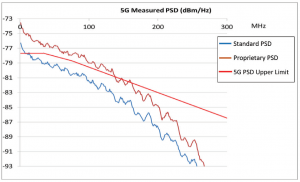NBASE-T Alliance Documents Risks of Non-Compliant Devices
Author: Theodore Brillhart, Fluke Networks
Just over a year ago, the IEEE ratified a new Ethernet specification – IEEE 802.3bz™ – that defines 2.5GBASE-T and 5GBASE-T operation. This technology is capable of boosting the top speed of traditional Ethernet five-times without requiring replacement of current cabling. The new transmission standards, slotted between the 1Gb and 10Gb Ethernet rates, address the demand for faster access to a rapidly rising data volume, while extending the value of millions of miles of installed Cat5e and Cat6 cabling infrastructure.
But like anything new, there’s bound to be one or two complications to watch out for. The NBASE-T Alliance just released a white paper detailing one such complication.
Background: The NBASE-T Alliance formed in 2014 to promote the development of the multi-gigabit PHY technology that became 2.5GBASE-T and 5GBASE-T. The IEEE approved the 802.3bz project to standardize the new rates in March of 2015. And although the 802.3bz Task Force reviewed competing proposals, it adopted the NBASE-T specification with only minor changes and the standard was ratified by the IEEE SA in September 2016. Current expectations exist for shipments of NBASE-T that are on the order of three to five million ports in 2017 according to the Dell’Oro Group.
The complication: Non-compliant 2.5Gb/s and 5Gb/s transmission risks.
The NBASE-T Alliance white paper “describes observations of non-standard operating modes in products advertising IEEE 802.3bz performance.” That is to say, measurements of transmitter power were performed on OEM equipment labeled as being IEEE 802.3bz compliant. The measurements were taken by independent and highly reliable sources identified in the whitepaper. What they found was an increased power level for both 2.5G and 5G transmission modes. However these products are not labeled as supporting any proprietary transmission modes.
Here is a sample of the measured power levels from the alliance white paper:


[NBASE-T Alliance, “Impact of Crosstalk from Non-Standard Links on IEEE 802.3bz”, October 2017]
One can clearly see Power Spectral Density (PSD) levels are well above specified levels for large portions of the transmit spectrum (MHz).
Why would this matter? You might ask. On the surface it sounds like they may perform better – that they should transmit farther. And that might well be true, if it weren’t for a now well-known primary limiting performance factor in modern ICT networks – Alien Crosstalk.
The 1000BASE-T standard recognized, years ago, the potential for crosstalk between bundled cables, but declined to make it a requirement for links. Similarly, alien crosstalk was not specified for Cat5e and Cat6 cabling. When 10GBASE-T came along, alien crosstalk was recognized as a major contributor to the overall noise budget allocated for successful operation. Consequently, Category 6A cabling has well specified alien crosstalk levels. Now NBASE-T and subsequent IEEE standards have extended the 10GBASE-T methods to manage alien crosstalk for 2.5G and 5GBASE-T, on Cat5e and Cat6 cabling. The transmit power levels and spectrum densities were carefully chosen to avoid impairment of network performance on existing Ethernet systems. The white paper goes on to point out that new or non-standard signals, that use higher power levels, will have negative effects on the performance of existing standardized systems.
What to expect. The NBASE-T white paper describes calculations (confirmed by Fluke Networks engineers) that predict alien crosstalk degradation that is nearly equal to the amount that the non-standard signals exceed standard power levels (in dB). The loss of margin can be as much as 2 to 3 dB for long 2.5GBASE-T links, and as much as 6 dB for short 5GBASE-T links. (Note: short 2.5GBASE-T link levels have not been fully evaluated.) These alien crosstalk margins are particularly aggravated for short victims utilizing power back-off techniques. They can also vary substantially based on the link configurations and the number of proprietary (non-standard) links that are present.
The measurement data presented in the whitepaper demonstrated this very well utilizing the industry standard 6-around-1 cable bundles. Non-standard transmitters (disturbers) were activated to assess the impact on standards compliant links. In well-controlled experiments, an NBASE-T downshift to a lower data rate occurred when the interference levels were too high. A second test setup utilizing just 4 of the possible 6 non-standard transmitters saw an IEEE-compliant 2.5GBASE-T link downshift to 1Gb/s.
Our conclusions: Standards are designed by experts to provide interoperability between a wide selection of equipment manufactures and produce predictable network upgrade cycles. The increased transmitter levels pointed out in the NBASE-T white paper violate foundations of the Ethernet specifications and compromise the management of the network interference environment. For unfortunate network owners this could result in failed links, frame errors, and reductions in link speed or reach, and must be avoided in all cases. The NBASE-T Alliance has done the networking industry a great favor in pointing this out so thoroughly.

